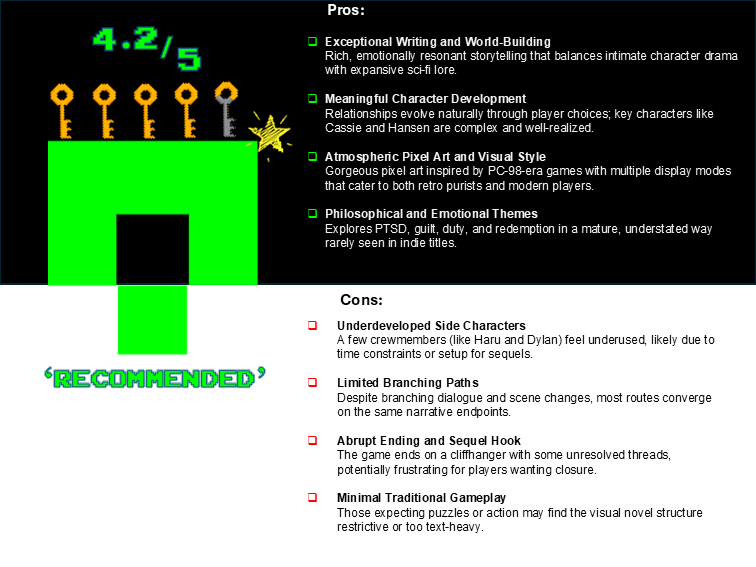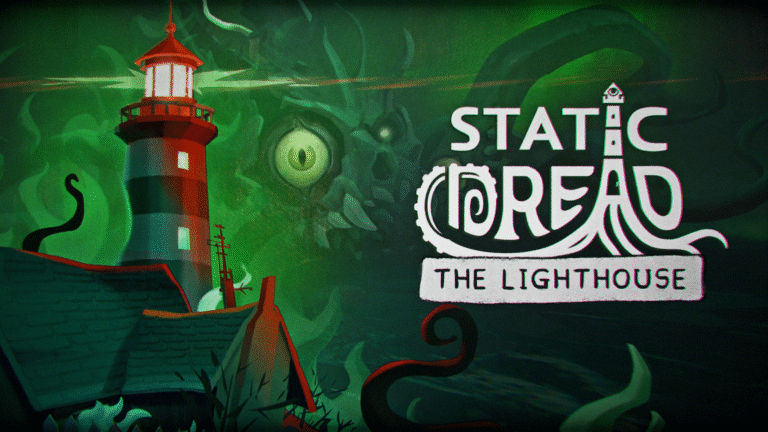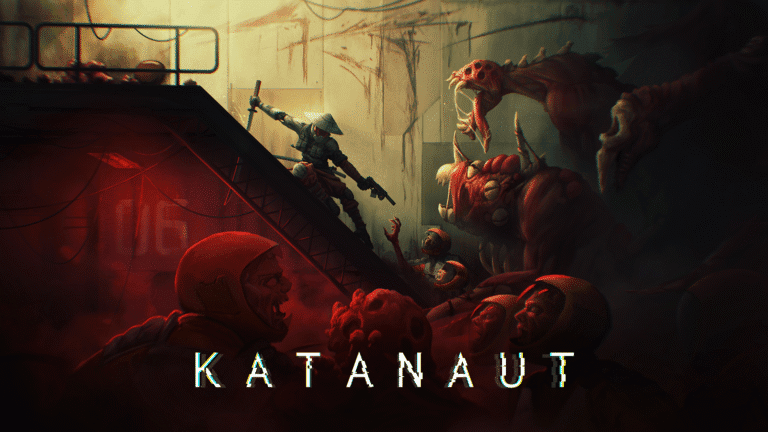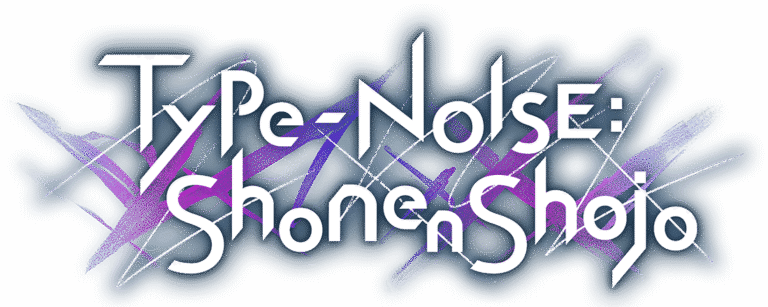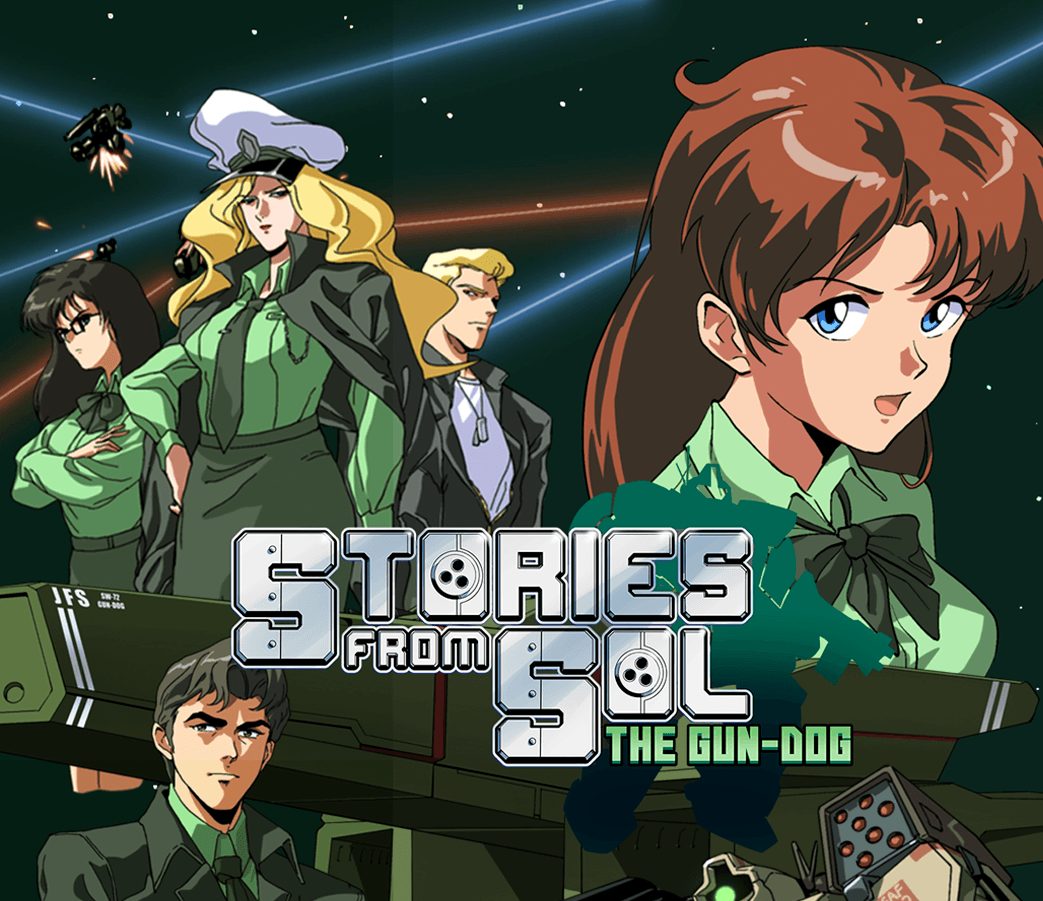
Let me be honest. My first encounter with The Gun-Dog was steeped in hesitation. It wore its aesthetic like a vintage badge of honor—pixelated PC-98-era art, chiptune music, menu-based navigation. Visual novel? Text-heavy? Inspired by 1980s Japanese computers and anime like Macross and Mobile Suit Gundam?
I rolled my eyes. I’ve been burned by nostalgia before. Too many games hide shallow content beneath retro gloss. The Gun-Dog looked like it might be another one of those—yet another “tribute” that leaned so hard into homage it forgot to offer substance. I imagined janky dialogue, sluggish pacing, and anime archetypes marching through recycled drama.
But I was wrong.
Dear God, I was wrong.
It didn’t happen all at once. But somewhere between the tense confrontation with Hansen Crwys and a mission to the derelict O’Brien, the game clicked.
The “slow start” became purposeful. The bare corridors of the Gun-Dog transformed from backdrop to character. Dialogue that seemed stilted unfolded into poetic realism, filled with subtext and psychological weight. I stopped noticing the interface. I stopped checking the clock.
Because The Gun-Dog was no longer a retro experiment. It had become a mirror—for grief, regret, and redemption. And it spoke to me with more clarity than most modern AAA titles ever dared.
The irony? A game that looks like it belongs in a museum taught me something startlingly new about how interactive fiction can move a player.
Shattered Pilots and Ghosts of War: The Story Beneath the Steel
You play as an unnamed survivor of the Solar War—one of the only two members of a doomed mech squadron who made it out alive. Not because you fought bravely, but because your mech jammed. You sat. You listened. You survived. Everyone else didn’t.
Four years later, you’re a security officer aboard the JFS Gun-Dog, assigned to investigate a mysterious signal near the edge of Jovian space. But of course, nothing’s ever just that simple.
The Gun-Dog is filled with misfits. Bitter remnants of a broken war. Cassandra, your partner of two years and the ship’s bubbly but brilliant XO. Crwys, your fellow survivor, whose hatred for you is matched only by your own guilt. Lord, the cold and ambitious second-in-command, and Haru, a nonbinary pilot with mystery seeping from every glance.
This isn’t just a sci-fi drama. It’s a slow-burn bottle episode where confined quarters, trauma, and moral ambiguity brew until they explode. It echoes Alien without the xenomorphs, The Expanse without the sprawling scale. It’s intimate. And powerful.
The narrative doesn’t just unfold—it crawls, pulses, and fractures. You’re not saving the galaxy. You’re barely holding yourself—and your crew—together.
And the choice mechanics? Subtle. Elegant. Your decisions don’t splinter the plot into 10 endings. They recolor the tone, shift relationships, deepen the pathos. Like real life, most outcomes loop back—but how you get there changes everything.
Mechanics of Memory: Gameplay That Fades Into Feelings
Let’s address the elephant: this is a visual novel. Yes, it’s menu-driven. Yes, you’ll do a lot of reading. But if you’re thinking slow equals boring, you’re missing the point.
Think Famicom Detective Club meets Disco Elysium, stripped of traditional RPG mechanics but steeped in mood, lore, and subtle interaction. You’re not button-mashing. You’re decoding a world.
The interface—Move, Look, Use, Talk, Item—is clean. Intuitive. Every room has a manageable number of interactions. Your data-pad (a godsend) allows instant fast travel, logs your objectives, and even offers a lore glossary. No pixel-hunting. No guesswork.
And then there are the choices. Not all of them matter. But some cut. One flippant remark can close off dialogue with a crewmember. A moment of empathy can open a later scene’s vulnerability. A candy bar in a vending machine becomes a symbol of love if you pay attention.
It’s in the minutiae that The Gun-Dog finds magic.
Heartbeats in Pixels: Character Drama That Cuts Deep
What makes The Gun-Dog unforgettable isn’t the story’s sci-fi scaffolding—it’s the human drama beating inside that cold metal hull. This is a story about survivors, and more importantly, how survival isn’t always a blessing. It’s guilt. It’s grief. It’s wondering why you walked away when better people didn’t.
Let’s start with Cassie Quinn. XO. Lover. Bright-eyed and impulsive, but surprisingly sharp when it matters. Her relationship with the protagonist isn’t some afterthought or player reward—it’s baked into the narrative’s bones. You’re two broken people clinging to each other in a vacuum. And the game doesn’t shy from tension. Be cold, and she withers. Support her, and she blooms—but not blindly. She’ll call you out if you mess up. There’s one scene involving a heated confrontation between you, Hansen, and Cassie that I still replay in my head. Her disappointment physically hurt.
Hansen Crwys, the ghost of your past, starts as a bitter antagonist. He blames you for the death of their squad—and for good reason. But watch him evolve. He’s more than rage. He’s trauma, wrapped in bravado. In one route, a late-game scene between Hansen and the player broke me. He lets the mask slip, just for a moment. And it’s brutal.
There are weaker links, yes. Characters like Dylan Dees and Haru Rumney don’t get enough screen time. They feel like seeds planted for later stories, not fully realized yet. But that’s the thing about The Gun-Dog: it’s not a complete universe. It’s a beginning. A prologue. And viewed as such, even its incompleteness feels intentional—like a door left ajar.
How the Narrative Bends Without Breaking
Branching narratives often struggle with either being too chaotic or too inconsequential. The Gun-Dog walks a delicate line.
Don’t expect ten endings. You’re not playing Detroit: Become Human. This is closer to Oxenfree or Firewatch—where dialogue branches and moment-to-moment decisions shift character relationships and scene dynamics, but all roads ultimately lead to the same few key turning points.
And honestly? That’s fine. Because those differences matter. They’re emotional, not mechanical. Did you apologize to Cassie after a poor choice? Did Hansen respect you, or fear you? Was your final showdown marked by regret or resolve?
It’s those moments—small, sharp, and painfully human—that stick. And with multiple playthroughs, you begin to appreciate how intricately the writers wove choice into character arcs.
Aesthetic Alchemy
Let’s talk about the art.
Yes, it’s “retro.” Yes, it’s pixelated. But don’t let that fool you into thinking it’s simple. This is crafted retro—like a painting made to resemble a Polaroid but layered with meaning, color, and movement that no ’80s system could have achieved.
Three visual modes—Vivid, Studio, and Doujin—let you tailor the experience. I stuck with Vivid, where Kevin Butler’s pixel art sings. There’s an eerie warmth to every corridor of the Gun-Dog. Characters, though static most of the time, come alive through expression changes, posture shifts, and occasional full-screen art that hits like a hammer.
One scene—Cassie running into your arms after a harrowing mission—is burned into my memory. It’s brief, just a flash of animation. But it says more than pages of text ever could.
And the music? Daniel Goodman’s 8-bit score is haunting. It hums in the background like a ship’s engine, rising and falling with tension. Is it a soundtrack I’ll listen to outside the game? Probably not. But within The Gun-Dog, it’s indispensable. It’s another character.
A Universe Beyond the Hull
Here’s the part I didn’t expect: The Gun-Dog isn’t just a game—it’s a universe. The Solar War. The fractured political landscape of the Martian Front, Jovian Colonies, and Earth’s Federation. Mechs called Juno frames. Ghost signals from deep space. Religious undertones. Class struggle. Post-war trauma.
So much of this game is hinted at, not explained. Lore is tucked into conversations, datapad entries, environmental clues. You don’t get a codex—you live it.
And the result? The world feels huge, despite taking place mostly within a few cramped rooms. Like Dune, it drops you into a dense, lived-in world and trusts you to swim. You’ll surface with more questions than answers. And that’s by design.
The final act of the game teases a much larger threat—one that pushes the narrative from mystery into existential sci-fi. And while the ending doesn’t resolve much, it promises so much more. It dares you to imagine what’s next.
Seamless, Simple, but Smart
Technically speaking, The Gun-Dog is built in Ren’Py—a visual novel engine. But what Space Colony Studios does with it is wild.
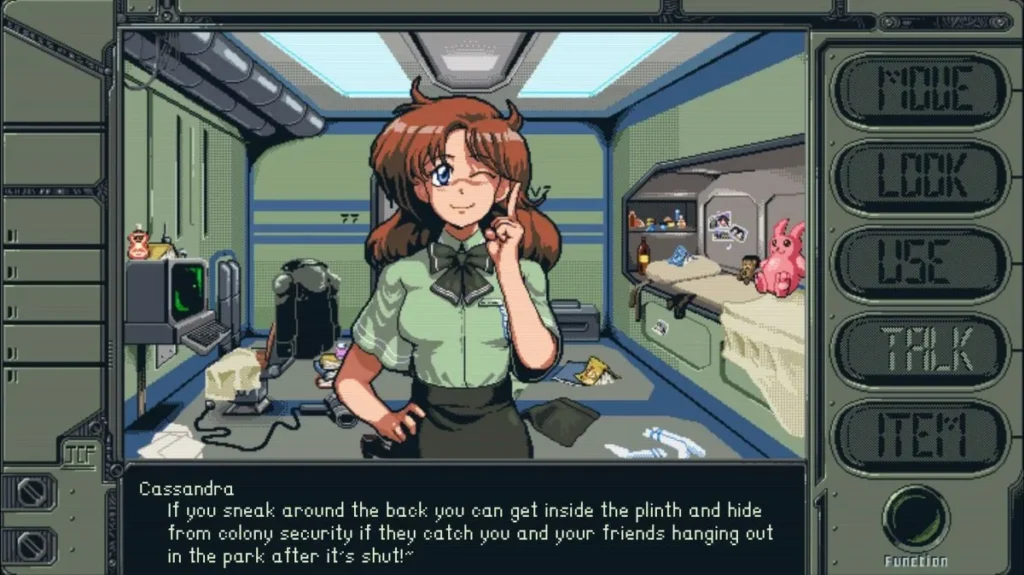
The UI is elegant, minimal, and functional. No visual clutter. Menus make sense. Fast travel is intuitive. Highlighted interaction points make pixel-hunting obsolete. Everything is streamlined for immersion.
There are a few hiccups. Load times, particularly on consoles, are oddly long. Text sometimes scales poorly. And yes, if you play long stretches, you might wish for more animation variety.
But nothing ever broke immersion. In fact, the design choices—limited palette, static rooms, retro effects—enhance it. They create a tactile feeling, as if you’re actually sitting at an old terminal, tapping through encrypted files. It’s not a bug. It’s the aesthetic.
You can finish The Gun-Dog in five to seven hours. But you won’t finish with it.
I played multiple times. Each run, I tried new choices. Pursued different relationships. Explored overlooked areas. And while the “main story” doesn’t dramatically shift, the emotional texture does.
There’s something meditative about returning to the Gun-Dog. Its creaks. Its hums. Its silences. Like re-reading a favorite book or rewatching a show that once got you through hard times. It feels like home.
The replayability isn’t about content bloat. It’s about nuance. And that, to me, is real longevity.
Inspirations and Divergences
Let’s place The Gun-Dog on the shelf.
It sits near VA-11 Hall-A in emotional tone. Beside Snatcher in aesthetic. It echoes Firewatch in emotional choices, Citizen Sleeper in quiet world-building, and Disco Elysium in its respect for player intelligence.
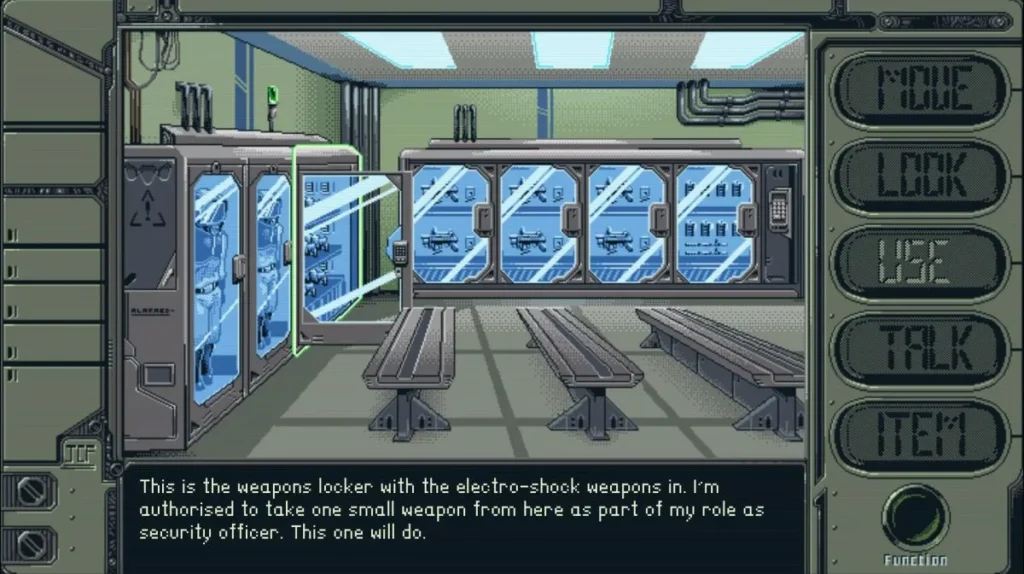
But it also stands apart. Because while those games riff on noir, cyberpunk, or RPG roots, The Gun-Dog commits fully to a genre few dare touch: military space opera as personal tragedy.
It doesn’t parody. It doesn’t wink. It believes in what it’s doing. And that sincerity—rare in an age of irony—is what elevates it.
Stories from Sol: The Gun-Dog is not perfect. Some characters lack depth. The replay paths converge too quickly. The ending leans too hard on the sequel hook.
But these are debut sins. And they pale beside what the game gets right—atmosphere, character, heart, and vision. It’s a tiny epic. A whisper in a genre of shouting. And for those who hear it, it will echo long after.
Conclusion: A Call to the Skeptics, the Dreamers, the Players
If you’ve ever loved a game that no one else seemed to understand…
If you’ve ever wanted your choices to matter in a quiet, human way…
If you’ve ever missed a time when stories mattered more than shaders or microtransactions…
Then please. Play The Gun-Dog. Not because it’s perfect. But because it dares.
Dares to feel. Dares to slow down. Dares to look at space not as spectacle, but as a place where broken people try to heal.
A copy of Playstation version of Stories from Sol : The Gun Dog was provided by publisher for review purposes.
